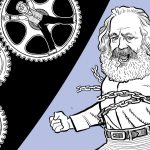The Complete Guide to Planning Tools: From Digital Apps to Time-Tested Analog Methods
In our fast-paced world, effective planning has become essential for managing personal and professional responsibilities. The right planning tools can transform chaos into clarity, helping you achieve goals, meet deadlines, and maintain balance. Whether you’re a digital native or prefer traditional methods, understanding your options can revolutionize how you organize your life.
Understanding Different Types of Planning Tools
Planning tools fall into several categories, each serving specific purposes and preferences. Digital tools offer convenience and integration, while analog methods provide tactile satisfaction and fewer distractions. Hybrid approaches combine the best of both worlds, allowing you to leverage technology while maintaining physical planning elements.
The key to successful planning lies not in using the most sophisticated tool, but in finding the system that aligns with your thinking style, lifestyle, and specific needs. Some people thrive with detailed digital calendars and task management apps, while others prefer the simplicity of pen and paper.
Digital Planning Applications
Modern digital planning tools have evolved far beyond simple calendar apps. Notion has emerged as a powerhouse for comprehensive planning, offering databases, templates, and customizable workflows that can handle everything from daily tasks to complex project management. Its flexibility allows users to create personalized planning systems that grow with their needs.
Todoist excels at task management with its intuitive natural language processing and robust project organization features. Users can quickly capture tasks, set due dates, and organize projects with labels and filters. The app’s karma system gamifies productivity, making task completion more engaging.
Google Calendar remains the gold standard for scheduling, offering seamless integration across devices and platforms. Its ability to layer multiple calendars, share events, and integrate with other Google services makes it indispensable for many users. The recent addition of Goals and Time Insights helps users make more intentional scheduling decisions.
Apple’s ecosystem provides integrated planning through Calendar, Reminders, and Notes apps that sync seamlessly across devices. For iOS users, this native integration often provides the smoothest experience, especially when combined with Siri for voice-activated planning.
Microsoft To Do and Outlook offer excellent options for Windows users and business environments, with strong integration with Office 365 and Teams. These tools excel in collaborative planning and professional task management.
Specialized apps like Forest help with focus and time management using the Pomodoro Technique, while Habitica gamifies habit building and routine management. RescueTime provides insights into how you actually spend your time, offering data-driven planning opportunities.
Traditional Analog Planning Methods
Despite the digital revolution, analog planning tools continue to thrive because they offer unique benefits that screens cannot replicate. The act of writing by hand has been shown to improve memory retention and cognitive processing, making handwritten plans more memorable and meaningful.
Bullet journaling has gained enormous popularity as a flexible analog system that combines planning, tracking, and reflection. Created by Ryder Carroll, this method uses simple symbols and rapid logging to capture tasks, events, and notes in a customizable format. The beauty of bullet journaling lies in its adaptability – users can create layouts that perfectly match their needs and preferences.
Traditional planners from companies like Erin Condren, Passion Planner, and Franklin Covey offer structured approaches to planning with pre-designed layouts for different planning styles. These planners often include goal-setting sections, habit trackers, and reflection prompts that encourage deeper thinking about priorities and progress.
Wall calendars and whiteboards provide visual planning that’s always visible, making them excellent for family coordination or team planning. The large format allows for color coding and visual elements that can make planning more engaging and accessible to multiple users.
Index cards and sticky notes offer ultimate flexibility for task management and project planning. The GTD (Getting Things Done) methodology popularized by David Allen often incorporates these simple tools for capturing and organizing thoughts and tasks.
Hybrid Planning Approaches
Many successful planners combine digital and analog methods to leverage the strengths of both approaches. A common hybrid approach involves using digital tools for scheduling and reminders while maintaining analog tools for daily planning and reflection.
Digital calendars with paper daily planners allow you to maintain long-term scheduling digitally while enjoying the tactile experience of daily planning on paper. This combination provides the convenience of digital syncing with the cognitive benefits of handwriting.
Printable planning templates bridge the gap between digital design and analog execution. Services like Pinterest and Etsy offer countless templates that can be customized digitally and printed for physical use. This approach allows for design flexibility while maintaining the benefits of paper planning.
Photo documentation of analog plans creates digital backups and searchability. Many planners photograph their weekly spreads or important planning pages, creating a digital archive that’s searchable and shareable.
Choosing the Right Planning System
Selecting effective planning tools requires honest self-assessment about your habits, preferences, and lifestyle. Consider your technology comfort level, planning complexity needs, and the environments where you’ll be planning most often.
Visual learners often benefit from tools that offer color coding, charts, and graphical representations of time and tasks. Digital tools like Trello or analog methods like bullet journaling with extensive visual elements can be particularly effective.
Detail-oriented planners might gravitate toward comprehensive digital systems like Notion or detailed paper planners with extensive sections for different life areas. These tools accommodate the need for thorough organization and tracking.
Minimalists often prefer simple, streamlined tools that focus on essential functions without overwhelming features. Basic calendar apps or simple notebook systems might be ideal for this planning style.
Collaborative planners need tools that facilitate sharing and coordination with family members, team members, or colleagues. Digital tools with sharing capabilities or shared physical planning spaces become essential.
Implementation Strategies
Successfully adopting new planning tools requires gradual implementation and consistent practice. Start with one primary tool rather than trying to implement multiple systems simultaneously. Give new tools at least three weeks of consistent use before evaluating their effectiveness.
Establish planning routines that become automatic habits. Many successful planners have daily planning sessions, weekly reviews, and monthly goal-setting sessions that provide regular touchpoints with their planning system.
Regular system evaluation ensures your planning tools continue to serve your evolving needs. What works during busy periods might not be ideal during slower times, and life changes often require planning system adjustments.
Backup systems prevent planning failures when primary tools aren’t available. Having a simple analog backup for digital systems, or knowing how to quickly access digital tools when analog systems aren’t available, provides planning continuity.
Common Planning Challenges and Solutions
Over-planning can become a productivity trap where planning takes more time than executing. Set time limits for planning sessions and focus on actionable outcomes rather than perfect systems.
Tool-switching addiction prevents planners from developing mastery with any single system. Resist the urge to constantly seek new tools and instead focus on optimizing your current system.
Perfectionism can paralyze planning efforts when systems don’t work flawlessly from the start. Embrace experimentation and iteration as natural parts of developing effective planning habits.
Inconsistent use undermines even the best planning tools. Link planning activities to existing habits and create environmental cues that remind you to engage with your planning system.
Planning tools are only as effective as the consistency and intentionality with which they’re used. The best planning system is the one you’ll actually use regularly, not necessarily the most sophisticated or popular option. Start simple, build consistency, and gradually add complexity as your planning skills develop. Remember that effective planning is a skill that improves with practice, regardless of which tools you choose to support your efforts.












